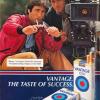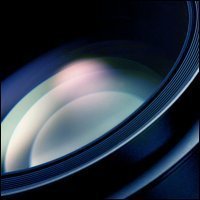
Richard Swearinger
Basic Member-
Posts
4 -
Joined
-
Last visited
Profile Information
-
Occupation
Camera Operator
-
Location
Iowa
-
My Gear
Canons and Nikons
-
Specialties
Specialty: The infinite sorrows that beset the human heart.
Medium: Documentary, news, short films.
Contact Methods
-
Website URL
richardswearinger.com/video
Recent Profile Visitors
-
Camera Height with sitting and standing actors
Richard Swearinger replied to DanielSydney's topic in Camera Operating & Gear
Comparing me to Kurosawa? Wow, I'm a genius and I didn't even know it. But I've been watching Tokyo Story and some of his other work and the natural way Ozu uses the camera is breathtaking. -
An interesting Composition discussion/debate
Richard Swearinger replied to Anne Bauchens's topic in Camera Operating & Gear
The muses rarely come down from the heavens and lay out your image for you; generally you have to wrestle with the problem on your own and having terms to describe what you do or don't like about what's in the frame is very helpful in getting to a composition that tells the story. Composition theory is not a set of rules or society's straightjacket, it's just a tool you can pull out when necessary to make your work better. No different from c-stands or apple boxes. As a novice in one field—visual composition—and an expert in a couple of others—writing and flavors—I would say that knowing the rules of composition is extremely valuable especially when you have to work in a decisive, efficient manner, it cuts down the time you spend with "what ifs." It's not reductionist, it's assessing the elements in the scene and coming up with a strategy to fix what you don't like and emphasize what you do. Also knowing these rules helps you keep your eye open to compositional possibilities you might miss if you weren't paying attention. -
Camera Height with sitting and standing actors
Richard Swearinger replied to DanielSydney's topic in Camera Operating & Gear
For a neutral angle, I would usually pull the camera back, set it for dead level, use a slightly long lens (70-90mm) to help minimize differences in the size of the actors, and set the camera height to split the difference between the two heads. To me, a longer lens also gives a sense of remove—the camera isn't judging, it's just observing. The exact height of the camera is going to depend on what's in the background, obviously you don't want any distracting lines sticking out of anyone's head or face. -
It's the highlight rolloff.
-
Richard Swearinger joined the community
-
Toplight is always the killer in these scenes because it robs objects of their shape amd gives people death eyes. people I know who shoot supermarkets (same fluorescent problem) put flags over the head of the talent and light them as if the fluorescents were just a really dim fill. Or for hero shots kill the fluorescents and only light the section of the background that the camera sees.
-
Best lighting books for film?
Richard Swearinger replied to Brock Smith's topic in Lighting for Film & Video
Reading books is great but you need to practice and the best advice I got was to practice with miniatures. Buy one of those clamp-on desk lamps with the long swiveling articulated arm, then go to the thrift store and buy yourself 10 to 15 small objects including toy people and spray paint them white. (You can also use a small spot on a light stand but I assume youre broke after paying for college). When its dark out arrange your objects into little scenes and use your one desk lamp plus one hunk of foam core as a reflector to replicate the lighting patterns in your books. It is permissible to use black foil to cut the light. Take photos and keep notes. Under no circumstances use two lights until you can do the all the basic one-light patterns in your sleep. Its all about learning to see the light and where it is coming from and where it goes. -
Animals and tungsten lighting
Richard Swearinger replied to Alex Sprenger's topic in Lighting for Film & Video
Sounds like you need to dig deeper with the trainer herself and find what exactly she meant. Most people do t know enough lighting terminology to ask for what they want She might have been trying to ask you to use LED panels but didnt know the correct term. Animals have long memories and I bet there was an incident that caused a bad reaction from her animals something like a lamp cracking or a ballast buzzing rather than the color temp itself. Or maybe they really are that sensitive to Kelvin. Fascinating mystery. -
Hazer tips / questions
Richard Swearinger replied to Dominik Bauch's topic in Lighting for Film & Video
I think I can imagine why, but would you mind sharing your reasons? And is that only location interiors or studio too? -
Hazer tips / questions
Richard Swearinger replied to Dominik Bauch's topic in Lighting for Film & Video
double post, sorry -
In filmmaking you'll be working with lots of very, very smart and literate people and one of the ways they bond with each other and communicate their ideas is by talking about plays, novels, and non-fiction. So, you need to get a grounding in that world. If you're a student, go see every play, author, candidate, and filmmaker who appears on campus or in your city no matter who they are or what they're talking about. School is a time to expose yourself to ideas—especially ideas you may disagree with. That's part of becoming an artist: the ability to work with differing points of view simultaneously. Your first goal should be to attend or watch films of at least half of Shakespeare's 37 plays plus some Chekhov, Eugene O'Neill, and Edward Albee (even if it's bad community theater, you need to see these works). In your car always have either a classic novel or current best-seller going. Try and get in a political book once in a while, but never express your political leanings on set—it's OK however, to talk about the cinematic and commercial possibilities of a political book, who owns the rights, and who you might cast in the roles. The only other thing I would recommend is to memorize the f/stops in 1/3 intervals between f/.09 and f/64.
-
MacBook Specs for Editing
Richard Swearinger replied to Henry Truitt Harshaw's topic in General Discussion
The one piece of wisdom I can share is that video RAM is becoming more important for some editing and compositing programs so make sure the video card has enough. The minimum used to be 2GB but lately i've seen suggestions that you need at least 4GB of video ram. Start by checking the recommended specs from whichever software you plan to use—they will get you to the right ballpark at least. This is only my experience but I followed Blackmagic's recommendations when I bought a computer to run Resolve and it really narrowed down the number of decisions I had to make. As for Mac vs. PC, I've always just used whatever my clients use. They're the ones who pay me. Hopefully others will have more logical reasons for picking one over the other, but that's my reasoning. -
Top 10 Films to Watch for Cinematographers
Richard Swearinger replied to manigandan srinivasan's topic in Cinematographers
Maybe I missed them, but I didn't see these two on any of the lists, "The Emigrants" Liv Ulman recalled that director/cinematographer Jan Troell moved "like a ballet dancer" with his handheld camera as he shot this masterpiece. "The Friends of Eddie Coyle" The most beautiful of all the gritty, location-focused crime dramas of the 1970s. Victor J. Kemper shoots the raw underside of Boston with almost hallucinogenic realism. A fairly recent movie that deserved more attention for its cinematography was "The Purge" (2013) by cinematographer Jacques Jouffret—his fluid, disciplined camera work gives this sci-fi thriller an organic, elegant look. -
Couple of other things, and this is true with anything involving cameras but especially the C100: If you find yourself saying "it's fine for now, we'll fix it in post" that is a red flag that means something is horribly wrong and you need to fix it before you roll one frame of film. Also, since the image won't take a huge amount of grading, I find I get better results if I set a custom white balance with a calibrated gray card for every scene. Either Kodak or WhiBal work for me.
- 8 replies
-
- Cinematography
- Digital
-
(and 1 more)
Tagged with:
-
I own that camera and I get nice footage out of it but it definitely takes some work and you have to be very careful with contrast ratios and exposure. And you only get out what you put in front of the lens. Like if you want colorful images, you have to make sure that your actors are wearing colorful costumes. You can't really punch it up in post. But what are you seeing that you don't like?
- 8 replies
-
- Cinematography
- Digital
-
(and 1 more)
Tagged with:
-
Amazing. Who would have thought that gate build up would have still been a problem. Thanks to both of you.
- 4 replies
-
- history
- obscure tools
-
(and 3 more)
Tagged with:






